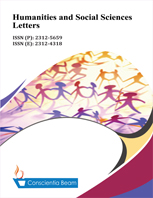Problems of International Committed Partnership Cooperation: A Successful Case of Reconstruction Surgery in Japan for Laotian Child with Severe Facial Anomaly
DOI:
https://doi.org/10.18488/journal.73/2016.4.4/73.4.77.81Abstract
Background: Various models of international medical aid have been proposed in many developing countries, including the donation of material, visited by surgical teams, and surgical outreach programs. However, they have limitations in the treatment of patients with severe or rare diseases. Object: We present the successful treatment of a Laotian child with cleft face anomaly, who underwent reconstruction surgery in Japan, and highlight the problems of a committed partnership system. Case presentation: A 2-year-old Laotian girl with severe facial anomaly required revision surgery; however, no physicians in Laos accepted her for treatment. An international medical cooperation volunteer group campaigned to raise funds for her treatment, and our medical center accepted their offer to perform the surgery. Surgery was performed successfully, and the patient went back to Laos 2 weeks after surgery. Conclusion: When international "Committed Partnership" cooperation is required, several challenges can arise, including expenditure, choice of the medical centre, period of stay, lack of information, special design of surgery, different lifestyle and manner, and language barrier. Although many challenges confronted, we believe that partnerships between surgical centers in developed countries and medical volunteer groups in developing countries can succeed with their efforts and noble spirit.

